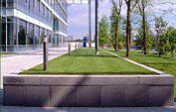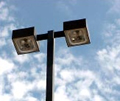 |
CPTED Design Guidelines |
| As a general CPTED guideline, when considering
fencing for a project, utilize an "open" decorative
design as opposed to solid fencing. |
| |
| CPTED Design at Home |
| One of the most vulnerable places
at your home is the narrow side yard. Good CPTED design
guidelines recommend that you
don't let the landscape become overgrown, creating a
hiding place for criminals. Use low-growing shrubs and a
gravel path for Natural Access Control or an open
fencing design. This is good CPTED practices. |
|
|
|
|
       |
| |
Our CPTED security consultants have decades of experience in crime prevention
with
extensive training and experience in the theory of Crime Prevention Through
Environmental Design or CPTED. There are four important CPTED design guidelines which you
should follow when conducting a CPTED security property assessment. Following are a
brief overview of the four main CPTED design guidelines widely accepted by CPTED
practitioners.
 |
CPTED Principle #1
Natural Surveillance
"See and be seen" is the overall goal when it comes
to CPTED and natural surveillance. A person is less likely to commit a crime if
they think someone will see them do it. Lighting and landscape play an
important role in Crime Prevention Through Environmental Design.
|
 |
 |
CPTED Principle #2
Natural Access Control
Natural Access Control is more than a high block wall
topped with barbed wire. Crime Prevention Through Environmental Design
or CPTED
utilizes the use of walkways, fences, lighting, signage and landscape to
clearly guide people and vehicles to and from the proper entrances. The
goal with this CPTED principle is not necessarily to keep intruders out, but to direct the flow of
people while decreasing the opportunity for crime.
|
 |
 |
CPTED Principle #3
Territorial Reinforcement
Creating or extending a "sphere of influence" by
utilizing physical designs such as pavement treatments, landscaping and
signage that enable users of an area to develop a sense of
proprietorship over it is the goal of this CPTED principle. Public areas are clearly distinguished from
private ones. Potential trespassers perceive this control and are
thereby discouraged.
|
 |
 |
CPTED Principle #4
Maintenance
CPTED and the "Broken Window Theory" suggests that one "broken window" or
nuisance, if allowed to exist, will lead to others and ultimately to the
decline of an entire neighborhood. Neglected and poorly maintained
properties are breeding grounds for criminal activity. We will work with
you to develop a formal CPTED based maintenance plan to help you
preserve your property value and make it a safer place. |
 |
|
|
|
|
|
|

